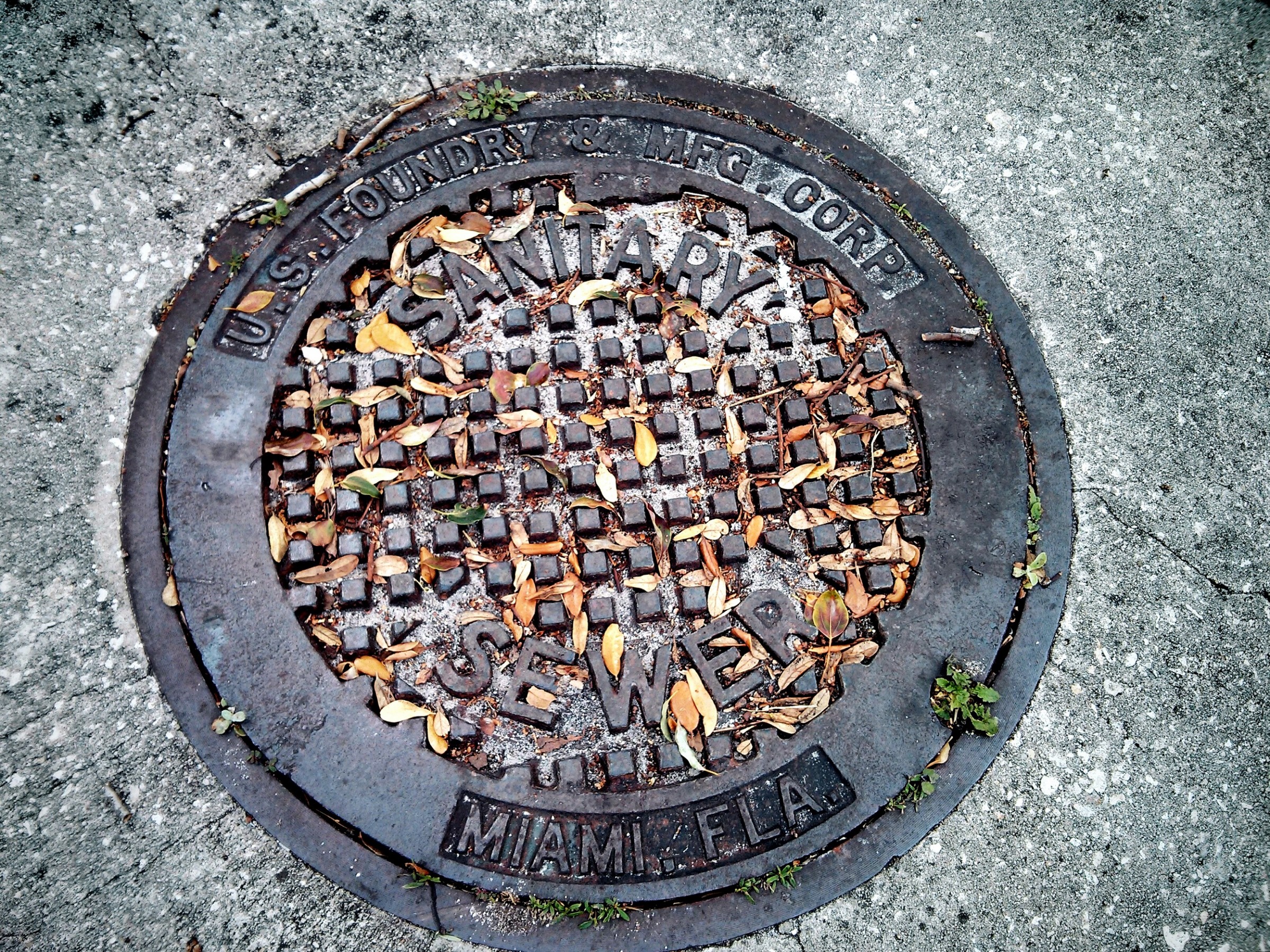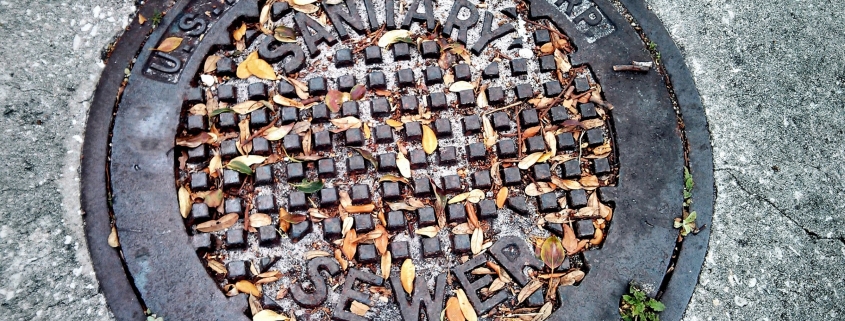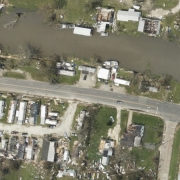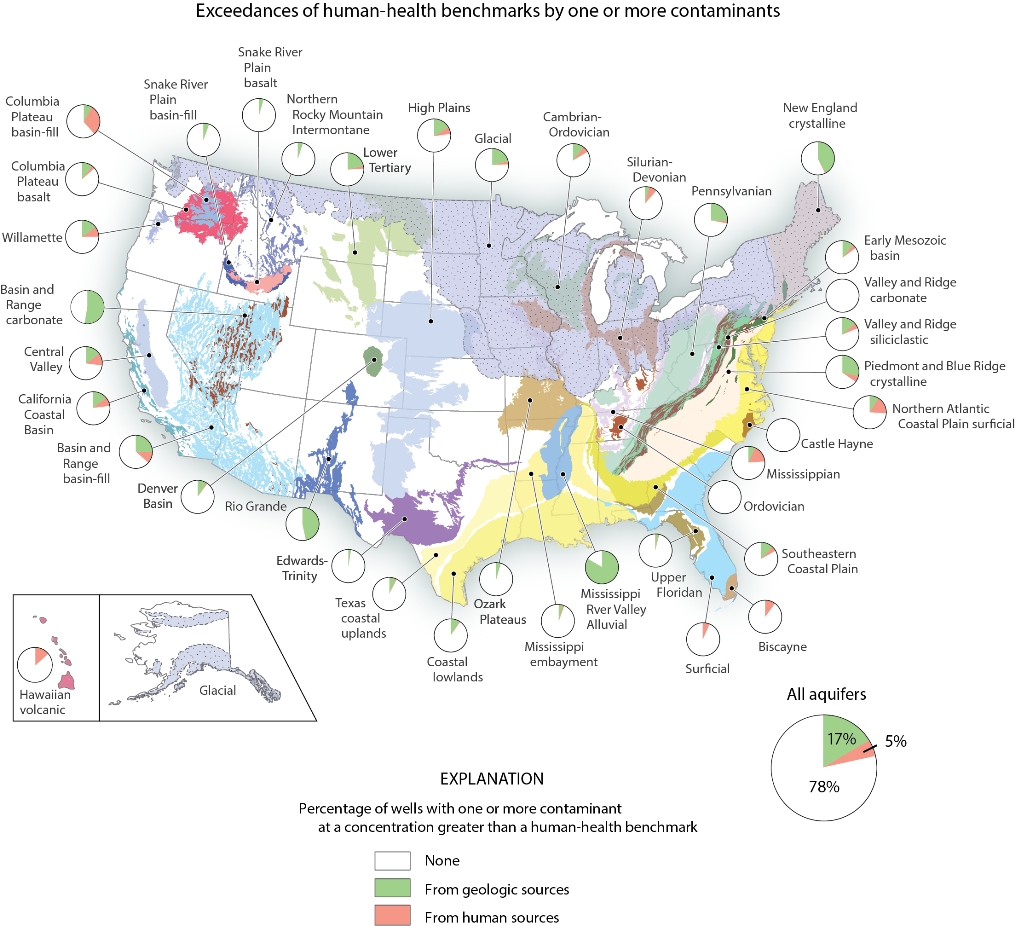Enthusiasm But Obstacles in Using Sewage to Monitor Coronavirus
Despite hurdles, support builds for sewage monitoring programs.

A sewer cover in Miami, Florida. Photo courtesy of Flickr/Creative Commons user ryaninc
By Brett Walton, Circle of Blue
Health departments and researchers in hundreds of cities worldwide are turning to sewage to better understand the spread of the new coronavirus in their communities.
This is an option because people infected with SARS-CoV-2 shed virus particles in their stool. Generally these are non-infectious strands of genetic material rather than active viruses, but the information is useful nonetheless.
Advocates for sewage surveillance hope that data gleaned from the sewers could serve as an early-warning system for outbreaks — a system that would ring alarms about community spread of the virus well before cities reached the crisis situations that emerged in February and March.
In places like the United States where testing of residents has lagged, a central sampling point has the added appeal of simplicity, compared to the rigors of clinical testing. Why jab thousands of people per day with nasal swabs if sewage holds the same answers?
“It’s a community swab,” Jay Garland, a U.S. Environmental Protection Agency scientist, said about sewage testing. Garland added during an online briefing last week that sewage could provide a broad view that informs public-health decisions about shutdowns and reopenings.
Sewage data has been used previously to track polio viruses and assess illegal drug use. But for all its benefits, there are still many hurdles before sewage surveillance can be scaled up for use by decision-makers during the coronavirus pandemic.
Among the scores of facilities that are doing testing, there are a number of different analytical and sampling methods. The hodgepodge complicates comparison of results. A group of leading wastewater scientists argued in the journal Science of the Total Environment that standardized methods are needed.
Garland noted that the dynamics within sewers need to be taken into account. How do the virus particles behave within the pipes? How long do they take to degrade? What is the effect of stormwater flows and seepage? Do they mask virus particles that would otherwise be visible?
Other obstacles are in the translation of results. The key question, according to health experts including Vincent Hill of the U.S. Centers for Disease Control and Prevention, is reliability.
Public officials are making consequential decisions about opening buildings and mandating quarantines. For that reason, Hill said, they need to be confident that sewage data is telling them something that reflects reality.
Ideally, scientists would be able to translate a virus concentration in sewage into a number that indicates its prevalence within a community. The science supporting SARS-CoV-2 surveillance in sewage is developing rapidly, but it is not to that point yet.
“There’s quite a bit of work until that is a possibility,” said Krista Wigginton, an associate professor of environmental engineering at the University of Michigan.
Wigginton added that samples could be taken not only from the treatment plant, but also from various points within the sewer network. Samples divided by neighborhoods could point to variation within a city. These neighborhood samples could then be matched with clinical data to validate the findings.
Interest in sewage surveillance is high and growing. Biobot, a Boston-area startup, is testing sewage from about 400 facilities in 42 U.S. states. Wigginton was awarded a National Science Foundation grant in March to investigate the coronavirus. She is tracking sewage from 25 utilities in California. Researchers and public health authorities in the Netherlands are analyzing sewage from more than two dozen cities in that country. A team from Syracuse University is investigating sewage in Onondaga and Cayuga counties, in New York. An international research collective is using the networking tool Slack to collaborate. Its website notes sewage surveillance studies from nine countries.
Garland said the EPA is working with the state of Ohio to develop a pilot testing program. He said that Gov. Mike DeWine wants to implement such a program statewide.
Other states are waiting before they jump in. The Washington State Department of Health is aware of the sewage surveillance methods but does not have any plans to use them at this time, said Kristen Maki, a department spokesperson.
“Our first priority is to control the virus so we can reopen the economy, so we have to put our attention towards the things that we know help us most with that — testing, contact tracing, making sure our health care system is prepared,” Maki wrote to Circle of Blue.
Scaling up sewage testing — adding more locations and increasing the frequency of sampling — will require more resources than are currently available.
Even relatively small amounts would be a worthy investment, said David Sedlak, an environmental engineer at the University of California, Berkeley. Wigginton’s grant, for instance, was for $68,591.
“When you think on the scale of shutting down cities, spending tens of millions of dollars [on testing] might be sensible,” Sedlak said.
Brett writes about agriculture, energy, infrastructure, and the politics and economics of water in the United States. He also writes the Federal Water Tap, Circle of Blue’s weekly digest of U.S. government water news. He is the winner of two Society of Environmental Journalists reporting awards, one of the top honors in American environmental journalism: first place for explanatory reporting for a series on septic system pollution in the United States(2016) and third place for beat reporting in a small market (2014). He received the Sierra Club’s Distinguished Service Award in 2018. Brett lives in Seattle, where he hikes the mountains and bakes pies. Contact Brett Walton












Leave a Reply
Want to join the discussion?Feel free to contribute!